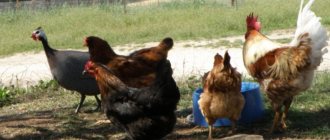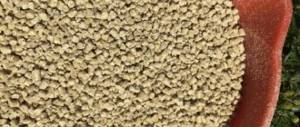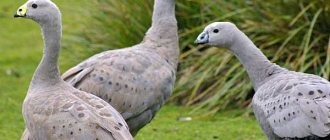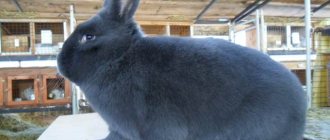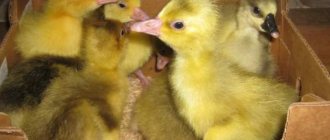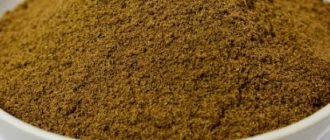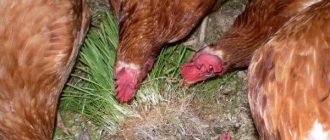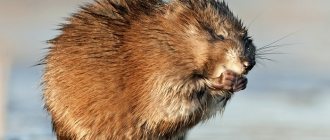Growing area and walking area
If there is a small area, it is necessary to artificially create conditions for the birds that are as close as possible to the natural environment. To do this you will need:
- Build a special room. It is recommended to build the poultry house on an elevated area or on an area with a slope. Install the windows, glaze them and tighten them with wire mesh from the inside. Make the floor from boards, lay a bedding of peat, straw, and sawdust under them. When keeping a large number of animals, it is necessary to partition the room into sections using fine mesh, attaching the lower edge to the boards - this way the birds will not crawl under them into other sections.
- Fence part of the garden where trees and shrubs grow. In hot weather, the birds will be cool in the bushes, and they will also have the opportunity to eat pasture and insects.
- Fence the area with a metal mesh fence. Birds can fly, and the netting will prevent them from leaving the area.
- Install drinking bowls and feeders inside. Guinea fowl should have free access to food and clean water.
- Set up perches and nests. Perches are installed at a height of 40-50 cm from the floor. The material for manufacturing is strips that have a slightly rounded shape. The size of the nests is 40x30x30 cm. They are placed near the walls in a secluded corner. There is one nest for 6-8 birds.
Without letting birds out into the fresh air, problems with their health are possible. Guinea fowl love freedom and outdoor activities are as important to them as food.
Places are allocated for walking, depending on the number of individuals. There should be enough space for them so that they do not push and run freely. There is no need to install a roof on the territory, but a canopy will not hurt - it will protect from rain or scorching sun.
Care and maintenance
Any room is suitable for raising Siberian guinea fowl. In the summer, an ordinary barn can become a home for birds, and for year-round winter maintenance you cannot do without a well-insulated chicken coop, where all the required conditions will be met:
- In order for the birds to survive the winter well, it is necessary to arrange a deep litter in the poultry house using hay, sawdust, peat or shavings.
- Install perches in the poultry house at a height of 50-70 cm from the floor. One guinea fowl accounts for 25-30 cm of perch length.
- Birds usually choose secluded places to lay eggs, so installing nests is a futile task.
- In the poultry house, it is necessary to equip a hole measuring 30x30 cm. It must open outward so that the animal can freely get out, and the farmer, when opening the door, does not accidentally injure the animals.
We suggest you read: Setting up an aquarium for turtles
Walking yard
Siberian birds feel great in closed poultry houses and cages, but providing a walk for the birds will allow the birds to eat pasture, which will significantly reduce the cost of feeding the animals. Guinea fowl like to feast on Colorado beetles, locusts, caterpillars, weevils, butterflies and other malicious field pests, even small rodents. At the same time, birds do not rake the garden, causing damage to the roots of plants.
It is necessary to build an aviary next to the poultry house, fencing the area with a mesh at least 2 meters high. Birds fly well, and the net will not give them the opportunity to escape to freedom. The area of the enclosure depends on the purpose for which the farmer keeps guinea fowl. To obtain a high-quality fertilized egg, each individual requires at least 15 square meters of territory.
Feeding and regimen
Siberian white guinea fowl are also not demanding on their diet. They are able to feed on any plant or animal food. When creating a diet for birds of this breed, it is necessary to follow the same recommendations as for egg-laying chickens.
The specific composition and volume of feed depends on the conditions of keeping the poultry, including whether it has the opportunity to go out for a walk or is kept indoors. If a bird grazes in the fresh air all day, it will independently obtain the bulk of its green food and protein-containing products (various insects). In this case, you will need to feed her only once a day, in the evening.
In the absence of walking, guinea fowls need to be provided with a complete and balanced diet. The main components of the food are fresh greens and various insects. In addition, the menu should contain vegetables, combined feed and food waste. Last but not least are mineral supplements.
| Type of feed | Percentage in diet | Amount of feed per individual per year |
| Mineral supplements | 4% | 2 kg |
| Green grass | 20% | 10-12 kg |
| Root vegetables and other vegetables | 9% | 4-5 kg |
| Food of animal origin | 7% | 3-4 kg |
| Grain and feed | 60% | 30-35 kg |
If you are planning to have guinea fowl, you should definitely familiarize yourself with the features of their maintenance and care.
Basic care includes several important points (Figure 4):
- It is advisable to let the birds go for a walk so that they can freely eat green food. The diet is supplemented with grain, wet mash and root vegetables, which are placed in separate feeders.
- There is no need to build a special poultry house. They will feel comfortable in a regular chicken coop. The main thing is that there is enough space for all individuals (1 square meter for 2 individuals).
- The walk must be fenced with a high fence (at least two meters), since guinea fowl fly well and can easily go beyond the fence.
- Feeders, drinkers and containers with ash are placed inside the enclosure. It is also recommended to set up several perches and plant shrubs to imitate natural conditions.
Figure 4. Construction and interior arrangement of the enclosure
You will find more information on the care and maintenance of guinea fowl in the video.
Productivity
Guinea fowl are considered massive birds. The weight of an adult chicken reaches from 1.5 to 2 kg. At the same time, the cost of fattening poultry is small and amounts to approximately 3-3.5 kg per 1 kg of weight gain. Productive qualities depend on the type of bird. But in general, guinea fowl of any type produce no less than 90 and no more than 120 eggs. The average weight of an adult female varies between 1.5-1.8 kg, a male - 1.8-2.1 kg.
In a small area, birds are not able to “run” and therefore lose weight. When fed only grass, guinea fowl produce 20% fewer eggs. Sometimes laying hens lay less eggs due to low temperatures in the coop or poor sanitary conditions in their homes. For these reasons, the temperature in the barn should be at least +12 degrees; it is also important to regularly clean the room, get rid of waste, and change the bedding.
The reason for a decrease in egg production is often the low nutritional value of feed. Increasing the nutritional quality of food and obtaining feed with a high content of valuable amino acids will help restore productive indicators.
Females reach sexual maturity at approximately 7-7.5 months. The egg-laying season can last from six months to a year. During this period, on average, one female lays up to 90 eggs.
Read more about what factors influence a bird’s egg production and what to do if guinea fowl stop laying eggs here.
Characteristics of the bird
A mandatory sign of a healthy flock is the timidity of guinea fowl. Quiet behavior should alert the owner. Birds usually make a noise, constantly talking about something. The restless noise made by the herd is a natural sign of the health of the population. Increased excitement is noted with the approach of an unfamiliar, alien object.
High immunity guarantees maximum resistance to typical poultry diseases.
The usefulness of the product, its increased ability to be preserved without loss of unique substances and microelements, justifies the increased costs of its acquisition.
The body of a healthy adult guinea fowl provides the individual with productive and decorative functions:
- production of eggs with a full range of valuable substances;
- feeding tasty, dietary meat;
- decorating the courtyard community with rare plumage.
Guinea fowl has beautiful feathers, tasty meat and healthy eggs
The nuances of proper maintenance of guinea fowl during the cold period
Summarizing the behavioral features of the guinea flock, and the tricks of keeping it during the frosty season and in cold weather, we note the importance of:
- the presence of a dry room with a heated floor, eliminating drafts;
- providing space for walking;
- balanced vitamin and mineral nutrition to maintain and increase meat weight;
- additional lighting design for poultry houses, increasing the time of egg production.
The cost of health-improving guinea fowl products obtained by producers is high. It is fully justified by its special high quality, which for a long time retains the ability not to lose the presence of useful components.
Sources:
https://www.agroxxi.ru/zhivotnovodstvo/stati/zimnee-soderzhanie-cesarok.html https://fermoved.ru/tsesarki/soderzhanie-cesarok-zimoj.html https://selomoe.ru/pticevodstvo/tsesarki/ zimnee-soderzhanie-tsesarok.html
Feeding and diet
Guinea fowl are not picky birds and can eat carrots, fresh chopped grass, food waste, beets, and potatoes. Birds are also fed with feed intended for chickens. Each bird should receive fresh greens at a rate of at least 50 grams per day. The main food is given in a volume of up to 150 grams.
It is possible to increase egg production by feeding birds with water in which yeast is diluted.
During the period of laying eggs, laying hens must be provided with feed containing calcium or supplemented with crushed eggshells. Birds like worms, snails and some insects - this fully contributes to meeting their needs for animal food.
If walking chickens is limited to an aviary, it is necessary to regularly include boiled fish waste or chopped boiled meat in the diet. Guinea fowl are prone to destroying Colorado potato beetles without harming the crop. But you shouldn’t let them near the cabbage - they can peck the heads of cabbage.
Guinea fowl are fed three times a day. During feeding, birds must have access to fresh cold water; in winter, animals are given only warm liquid to drink.
Feeding small chicks is based on a completely different principle; it differs from the feeding of adult birds:
- Young animals need to be provided with about 25% protein in the feed, and at an older age the protein should be about 15-20%. Chicks need green, succulent food.
- When the chicks are 7 days old, young fresh grass in crushed form is included in the diet. It is advisable to give babies clover, cabbage, alfalfa, dandelions, and wild cereals.
- The diet should be balanced. The menu includes not only greens, but also specialized food, corn, wheat, and millet. It is advisable to provide the young animals with milk powder and cottage cheese.
The diet of guinea fowl should include crushed chalk, crushed shells, coarse-grained washed river sand, and crushed eggshells.
Feeding
This summer there are no problems with guinea fowl in terms of food. They eat whatever they find in the yard. Even Colorado potato beetles. In winter it is more difficult with beetles. What to feed the bird? Experienced breeders use compound feed. The guinea fowl likes this kind of food. She eats it with pleasure. At the same time, various grains and vitamins are often added to the feed. The latter are especially useful for birds at home. Especially if the farmer keeps birds not only for meat, but also to get eggs.
In winter, guinea fowl can be fed with potatoes, legumes, pumpkin and zucchini. But what the bird cannot tolerate is spoiled and rotten food. The food must be perfectly fresh, then the guinea fowl will be cheerful.
Meals for guinea fowl should be strictly at the same time. The bird is regimented and quickly gets used to a certain routine. So, in winter, farmers feed guinea fowl three times a day at intervals of 6 hours. There is no need to add food at night; the birds only need water in the drinking bowl.
Guinea fowl breeding
Guinea fowl have poorly developed maternal instinct; the birds do not hatch eggs. Only some breeds can hatch eggs, and even about them breeders often speak very negatively. Therefore, breeding guinea fowl is not complete without an incubator and brooder.
Although guinea fowl are not prone to hatching eggs, there are usually no problems with breeding the bird. With the help of an incubator and minimal care for the young animals, you will be able to get a new, full-fledged herd.
Breeding in the incubator is carried out under strict control. After the chicks hatch, they are immediately moved into the brooder. Keeping birds in it requires compliance with certain rules:
- For 1 sq. m there are no more than 15 individuals.
- The temperature in the brooder should be within +28 degrees. From the 14th day after birth, the temperature is reduced daily by 1 degree until it becomes optimal for the external environment.
- Daylight hours up to 1 month of life are at least 20 hours. When the chicks are 5 weeks old, daylight hours are reduced to 16 hours.
- Guinea fowl are released for walks no earlier than 40 days after birth.
Adult chickens may become aggressive towards new birds in their flock. For these reasons, it is recommended to breed birds separately so that there is no mixing of individuals of different ages in a single flock.
Proper care of guinea fowls in winter
One of the main features of guinea fowl is their adaptability to cold weather.
Every breeder knows that these unusual birds have great endurance and strong immunity. The body temperature of an adult is 42.5°C throughout almost the entire year, and in winter it drops to 40°C.
Winter maintenance of guinea fowl has several nuances. Due to their characteristics, birds can live in winter even in an unheated room, but it is necessary to protect the house from winds and drafts, and also provide perches so that guinea fowls do not sit on the cold floor. This is done so that the birds do not catch a cold or get other diseases. Even though young chicks hatched in winter have high immunity, they are not yet strong enough and due to poor living conditions they can get sick or even die.
Basic conditions for keeping guinea fowl in winter:
- Convenient feeders. Proper nutrition is the key to healthy poultry, and therefore, tasty, harmless meat and a large number of eggs.
- Availability of a sufficient number of perches. They are needed so that the guinea fowl have a place to rest and sleep. Moreover, each bird must have its own perch. Also, creating a comfortable living environment guarantees a high level of productivity in winter. The height of the crossbars should be no more than half a meter above the ground.
- Covering the floor with natural materials: straw, dry peat or sawdust. In winter, this will help keep your shed or cage warm. Cleaning the floor is quite easy: you can simply cover the dirty layer with a clean one. This will not only help keep it clean, but will also increase the warmth.
- Ensuring sufficient lighting, since guinea fowl lay eggs only during the day when there is light in the room. Proper organization of additional lighting will help increase the egg laying period, especially in winter, when the days are very short. The most suitable conditions are lighting up to 15 hours a day for an adult bird. An artificial source of light and heating will protect guinea fowl from diseases due to freezing.
Also, proper maintenance of guinea fowls involves maintaining a dry room in the winter. The barn or enclosure should be at a slight slope so that mold does not form there from accumulated moisture.
An increased level of humidity in the room leads to a decrease in the body temperature of guinea fowls and a low level of egg laying, which in turn negatively affects the financial profitability of the farm.
Features of natural incubation
Guinea fowls are reluctant to lay nests, but placing nests in secluded, dark corners of the house using liners can increase the likelihood of nesting. Nesting boxes should be installed at the rate of 1 to 6 individuals, several tiers are allowed - the bird can take off. It is optimal if the dimensions of the nests are 30x40 cm.
A gregarious bird can choose one nest and rush into it with its entire population, without noticing other nesting sites. Or, on the contrary, it can lay eggs in the corner, not paying attention to the nests.
Caring for young animals
Keeping young animals requires a dry chicken coop, where there are no drafts. Crowding and possible crushing can be avoided by spacing the birds loosely. Hatched guinea fowl, like other chicks, really need warmth. Therefore, for the first 5 days they are kept near a heater so that the temperature is 31-32 degrees. By the age of 20 days, the optimal temperature is considered to be 19-20 degrees.
One hen can warm up to 16 guinea fowl, but the temperature in the chicken coop cannot be neglected. For a chicken that is more than 2 months old, it is necessary to provide 8-10 hours of daylight. Further, to increase egg production, the duration of daylight hours is increased. But reducing the length of daylight hours is a mandatory measure that affects the productive cycles of the bird and further indicators of egg production.
Be sure to install perches starting from 2 weeks of age. As perches, it is advisable to use slats located at a height of 45-50 cm from the floor. The peculiarity of this arrangement is that, being at a height, the bird will remain dry and clean, the plumage will warm the chickens.
How is the parent stock formed?
The parent herd consists of 1 male and several females. The difficulty becomes the stage of distinguishing between females and males. Outwardly they are similar, and only small signs indicate that this is a male. If we take into account that the rooster must be older in age, it is selected from the chickens of the previous brood.
The search for a male in a flock begins with determining the weight of each bird. Usually females are heavier and larger. This is the first, but not the only sign:
- The Caesars have an even posture, a proud gait, and a raised tail. Females almost always peck and look for food. At the same time, the males constantly “talk”, and the females modestly say “ooh”.
- The female and male have different structures of the head and beak. Females have a small graceful beak and their head is always straight. Males have a thick beak with a clearly visible growth and a curved crest. The neck is not long, the head is extended forward.
- Guinea fowl have delicate earrings under their beaks. Roosters have large and fleshy earrings. As laying hens age, the earrings become larger.
- Volga white and Volga cream Caesar roosters have lighter plumage.
- To determine the gender, you need to carefully take the chick, carefully open the cloaca; if there is a small tubercle, it is a male.
After finding a male, 5-6 females about 2 years old are selected and given a free run. Birds are not inclined to mate indoors. Having formed a parent flock, the collected eggs are stored in an upright position, with the blunt end towards the sky. They must be clean, because dirt can clog the pores, which leads to inhibition of embryo development. The masonry is collected before 12 noon.
If there is no hen among the guinea fowl, the eggs are placed in an incubator for 29 days, not forgetting to turn them over. It will be possible to hatch chicks with minimal losses by ensuring high humidity in the incubator.
Keeping guinea fowl in winter
Keeping birds in winter requires a special approach. Birds do well in an unheated coop, but need perches to avoid sitting on the floor. Be sure to change the litter once a month and make sure it is dry.
The onset of cold weather is not a reason to lock birds in a chicken coop and not let them out for a walk. The main thing is that the paths are cleared of snow, then nothing will happen to the guinea fowl. On the contrary, their immunity increases if they regularly go out into fresh air. If for some reason it is not possible to send animals for walking, care must be taken to ensure that the premises are well ventilated.
Farmers must take care of adequate nutrition during the winter period. Chickens are fed twice a day, giving them wet mash, mixed feed, and grain. In the poultry house, gravel, shells, chalk, as well as ash and sand are poured into separate containers.
Winter feeding rules
These poultry feed not only on plants and food, but also on various insects. In winter, it is impossible to find fresh grass and small insects, so you need to create a food ration for the birds that would provide them with all the necessary substances.
You cannot feed birds only food all winter; you need to give them sand and ash, which will satisfy their physiological needs. Laying birds should be given food with the addition of eggshells containing calcium, since they quickly use it up during gestation.
Poultry disease, vaccination and treatment
Guinea fowl are considered resistant and immune to bird diseases, but this does not always protect them from some diseases, which usually arise due to non-compliance with housing conditions.
The table shows common diseases of guinea fowl and ways to combat them:
| Disease | Symptoms | Treatment/Prevention |
| Pasteurellosis | When the disease occurs, birds suffer from high hyperthermia, become lethargic and inactive. They have yellow, gray or green droppings with bloody discharge. Mucus discharge comes from the nose. | There is no cure. Birds infected with pasteurellosis are destroyed. |
| Mycoplasmosis | Animals sneeze, wheeze, suffer from suffocation, nasal discharge, red eyes, and gastrointestinal upset. | The disease is treated with Streptomycin or Biomycin. For prevention, it is recommended to give young birds Enroxil or Baytril to drink. |
| Trichomoniasis | Young animals that consume dirty feed or water contaminated with Trichomonas often suffer from the disease. The disease is accompanied by foamy yellow diarrhea, loss of appetite, extreme thirst, inactivity and drooping wings. A mucous coating appears on the throat and crop, making it difficult to breathe and eat food. | Cardinozol and Ipronidazole are used as treatment. All guinea fowl are given antihelminthic therapy. |
| Pullorosis | The bird practically becomes motionless, has poor orientation in space, and the droppings become white or yellow. | Sick guinea fowl are culled, and the entire flock is treated with Penicillin or Biomycin. |
Keeping guinea fowl: positive and negative aspects
Breeding guinea fowl has few disadvantages, but there are many more positive aspects. It is especially important that raising birds is permissible not only for personal consumption, but also for business development. The advantages of this activity:
- guinea fowl lay large eggs almost all year round;
- It is permissible to let birds out for a walk near the garden: they do not spoil the garden beds, but cope with various insects that cause harm to the plantings; It is permissible to send broilers for walking in special areas or in vegetable gardens, pastures, meadows;
- birds get their own food; when it gets dark, they return home;
- Guinea fowl eggs have high nutritional value;
- birds have good health and increased resistance to adverse climatic conditions;
- guinea fowl can establish contact with various farm animals; they are housed with chickens, geese, quails, etc.;
- birds do not require special feed or synthetic vitamins;
- adult chickens rarely get sick and are practically not exposed to common diseases;
- Guinea fowl meat is dietary, tender, like turkey, but much better.
Farmers consider poultry meat to be especially valuable - it is tender, but not fatty. The taste characteristics are reminiscent of game. The color of guinea fowl meat is dark burgundy. The product contains a minimum of fat and moisture, has a high percentage of dry matter, and is rich in amino acids, vitamins A and E, and iron.
The main disadvantage of guinea fowl is that they are noisy. In any stressful situation, birds begin to scream - they may be afraid of people, strange sounds, animals. It is problematic to breed these birds in areas where many neighbors live or where cars pass nearby.
The owner of a small home farm will tell you about the pros and cons of raising guinea fowl in the following video:
Is the business profitable?
In Russia, breeding guinea fowl is not particularly popular. Usually, rare private farms choose broilers in small quantities for breeding for their own needs. If a farmer decides to breed birds on a large scale, he will not lose anything, on the contrary, he will only receive good benefits, due to the fact that this niche is practically free on the market.
There are several advantages of such a business:
- Guinea fowl eggs are very healthy. They are high in calories and do not cause allergic reactions when consumed. The egg product contains many vitamins.
- Guinea fowl adapt well to any conditions. The animals are unpretentious and do not require special equipment to keep them.
- Minimum start-up costs. A 4-5 week old bird costs about 500 rubles, and the cost of an adult bird varies between 3-4 thousand rubles.
- Benefit for rural residents. Starting a business with guinea fowl breeding in rural areas is an ideal option, because there is a lot of labor, but few places for employment.
In addition to selling egg products and meat carcasses, a farmer can sell live poultry, fertilized eggs for breeding, and guinea fowl feathers. They get additional profit from this.
Features of fattening in the cold months
No matter what time of year it is, you need a place for the “royal” birds to walk. They love freedom and happily walk through nearby meadows, peck insects in the garden and vegetable garden without damaging the plantings. In winter, you can’t feed guinea fowl their favorite delicacy, insects, because they simply aren’t there.
The food must contain all the missing elements. The enclosures are provided with ash and sand in quantities that satisfy the appetite and body needs of guinea fowls.
Laying hens consume calcium intensively. A large amount of it is found in egg shells. This product is well absorbed, strengthening the bones and muscles of the bird. Crushed shells are added to feed mixtures.
In winter, carrots replace greens in the diet of guinea fowls
About half of the royal bird's diet consists of greens. In private agriculture, it can be replaced in winter with various vegetable waste, carrot and potato peelings. On farmsteads or industrial farms, it is wise to add bone meal, fish oil, and sour dairy products to food. Feeding involves legumes, silage, yeast, sprouted grains and other food products typical for poultry.
Guinea fowl happily eat corn and wheat. Protein mixtures for laying hens are also used by egg-laying guinea fowl.
Before going to bed at night, it is better to give mixed feed; they maintain heat in the guinea fowl’s body and provide energy for vital activity. The necessary elements are formed, and in the cold season the bird continues to lay eggs, slightly losing weight.
Difficulties in breeding
Farmers who start breeding guinea fowl may encounter the following troubles:
- breeding young animals;
- lack of maternal instinct;
- laying eggs by females not in a nest, but, for example, in a secluded corner.
Although the birds are unpretentious to food and living conditions, it is difficult to breed young animals. First of all, this is due to the collection of eggs, which birds can lay in any part of the range. Females are considered poor brood hens and can constantly drop eggs if something scares them. Because of this, it is necessary to often use an incubator for hatching.
Guinea fowl are easy-care birds, slightly shy and occasionally aggressive. But farmers speak well of broilers, noting good productive performance, resistance to severe frosts, and good health. The breeding business can be a major source of income.
0
0
Copy link

